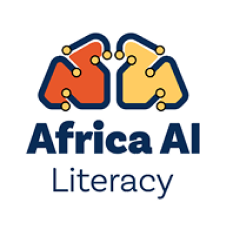This lesson investigates how AI tools can be used to design personalized learning experiences and helpful communication. You’ll delve into specific use cases where AI tools can modify your existing class materials to effectively meet the diverse needs of every learner, your colleagues, and guardians and families.
Modify materials with AI
An AI tool can be a fun and helpful teaching partner when you want to modify existing class materials and transform them into personalized learning experiences for students. There are numerous ways they can help you differentiate and customize content. Here are some examples:
Write summaries
Create clear and concise summaries of challenging articles, enabling students to grasp key concepts more effectively.
Adapt text complexity
Customize learning resources to various reading levels. For example, an AI tool can help adapt the reading level of complex or technical document to be accessible to 7th graders.
Modify projects
Design different activities and instructions to appropriately challenge and support students with different experience levels.
Prompts for modification
Now that you’ve reviewed a few examples of modifications of materials, examine the following prompt templates. Note that each of the following templates offers two options: One is very detailed, which is intended to help the AI tool provide a more targeted and successful output; the other is shorter, similar to the prompts you encountered previously throughout this course. Review both options and decide which one will be most helpful to you. Then, simply copy and paste the text into the AI tool of your choice and fill in the blanks. Each prompt may be refined for all sorts of applications, depending on your unique requirements:
Summarize content prompt
|
I am a [Enter your role]. Summarize the following content for any students who are not present during the classroom discussion. Ensure the summary is clear, concise, and easy to understand: Subject and topic: [State the subject and specific topic covered in the lesson] Reading or excerpt: [If appropriate, enter reading or excerpt name, or paste in the content] Reading level: [Note the desired reading level] Learning objectives:
Key points and details: [Summarize the main points and arguments] Terminology: [Define or explain any important terms or concepts used in the lesson. Format: [Specify the desired format, such as bullet points, a timeline, a comparison chart, etc.] Specific theme or context: [Include information about the content’s theme or the context in which it will exist] Level of detail: [Adjust the level of detail to be appropriate for your objective]
Adjust a reading level prompt
Adjust a reading level prompt — short version
Modify project activities prompt
Modify project activities — short version
These are just a few ideas to get you started; the possibilities are endless when it comes to modifying and enhancing learning materials! Get creative, experiment, and determine what works best for your students and your teaching style.
|
